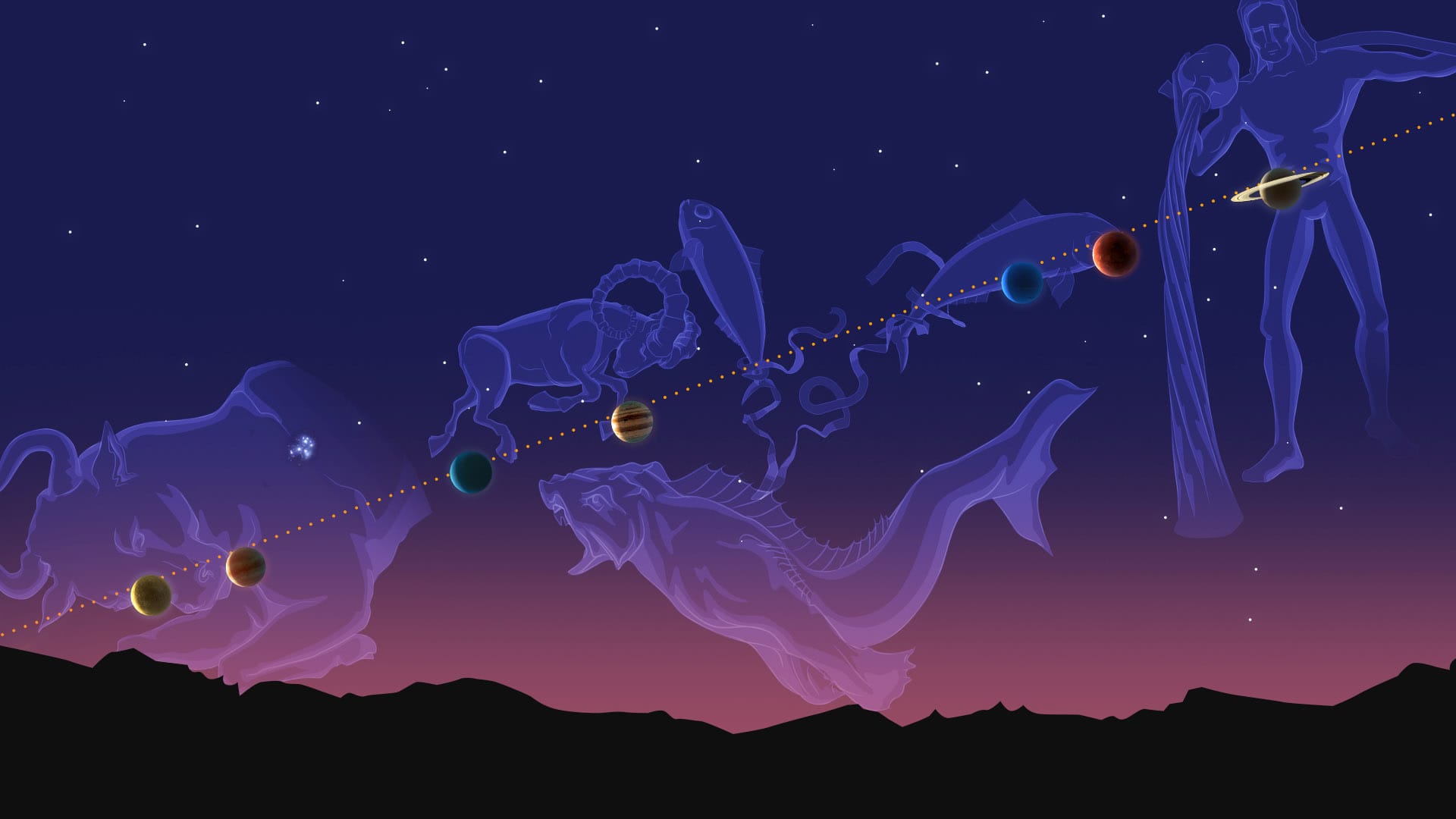By Maria Somova, Year 12
“Planetary alignment”, or in simpler words, planet parade, occurs when several planets align closely on one side of the sun at the same time, and are also visible from Earth. From January through February 2025 anyone who is a fan of astronomy, will be able to spot one of the greatest planetary displays seen in years.
So, what makes this specific planetary alignment so special? Usually, there are several types of planet parades, and their rarity depends on the number of planets that align together. A small planet parade is considered to be one when it consists of three or fewer planets. It is a fairly common event, as it occurs a few times every year. A moderate planet parade occurs every couple of years and consists of three to six planets in the solar system. A large planet parade, which consists of six to seven planets, is a rather rare occurrence that appears once in a couple of decades. So this year’s planetary parade, which will consist of seven celestial bodies, is one of the rarest of all. While smaller alignments occur more frequently, an alignment of seven planets (not including the moon) – is an event that will most likely happen once in a lifetime for many observers. Previously, a similar planetary arrangement occurred decades ago, and it will not reappear until 2050 when another planet parade of this magnitude will take place.
This planetary parade is not only an exciting spectacle, but also will present a unique opportunity for skywatchers and scientists to learn more about the cosmos. The observation of this particular alignment will allow astronomers to further analyze how planetary motion works, as well as how the gravitational forces influence the positions of planets.
In general, this January, the conditions for observing the parade of planets will be very favorable. This year’s planet parade will be visible to almost anyone during the evening hours. However, January 21st is a general date for when it will be seen in most parts of the world. According to Starwalk.space, here are the best times and angles to observe it in the smallest sector of the sky (no equipment required):
- Abu Dhabi: January 18th, 169-degree sky sector;
- Hong Kong: January 18th, 172-degree sky sector;
- Tokyo: January 21st, 157-degree sky sector;
- New York: January 22nd, 152-degree sky sector.
- Athens: January 23rd, 155-degree sky sector.
Four of the planets will be visible to the naked eye – Venus, Mars, Jupiter, and Saturn, while Neptune and Uranus will be visible through a telescope. Mercury will briefly join the parade on January 25th, though it will be difficult to notice due to its proximity to the sun. Moreover, this year, as a little bonus, the moon will join the planet parade. This means that there will be a total of eight celestial bodies lined up in our sky, all at once! This parade is a true chance to witness a natural miracle that may not happen again until many years later.



